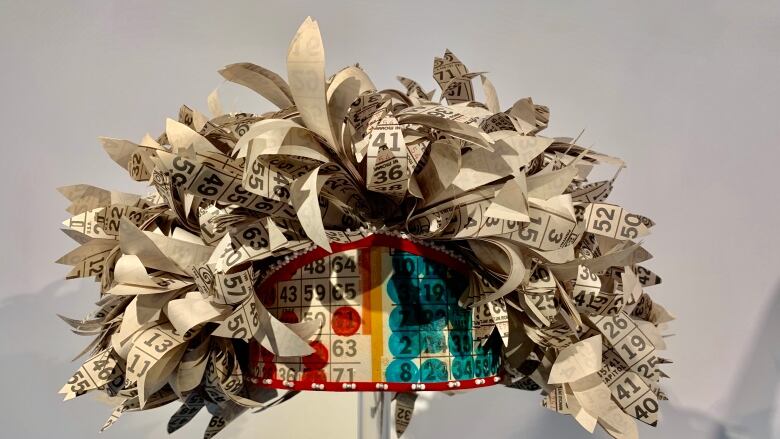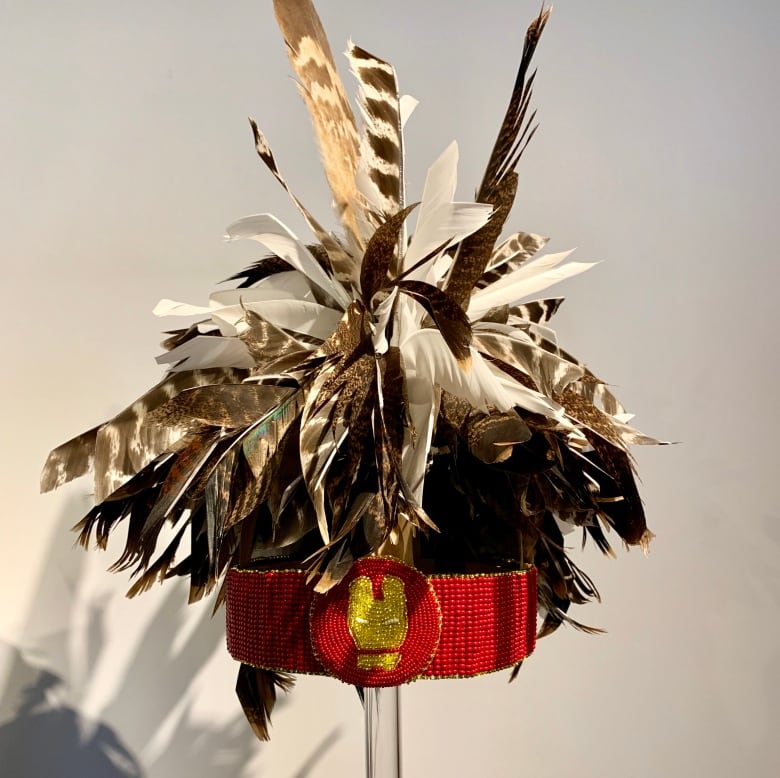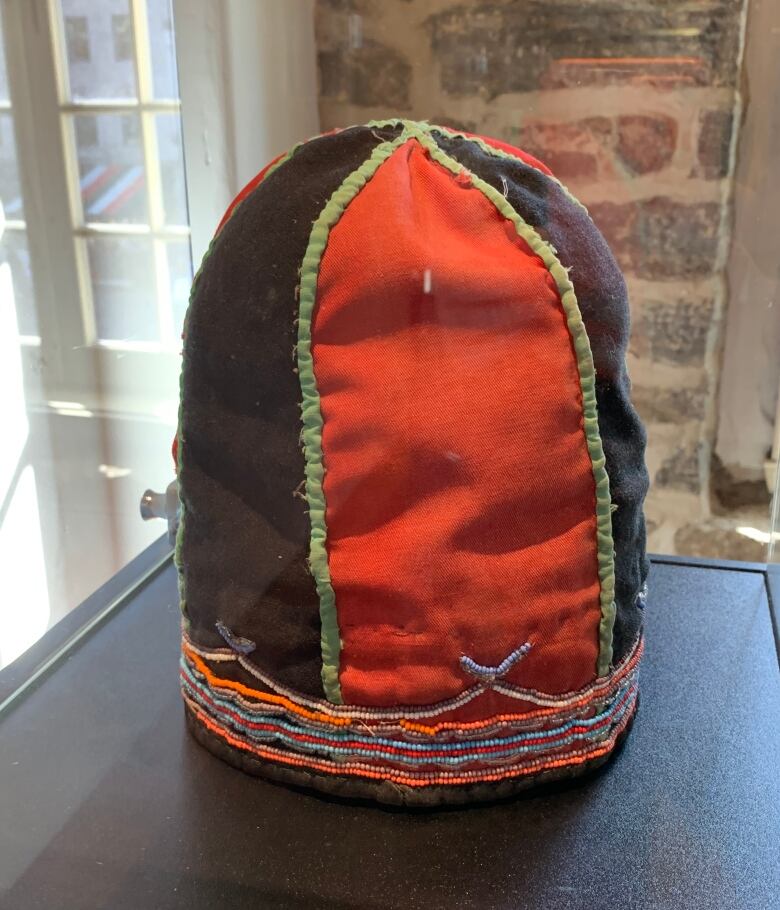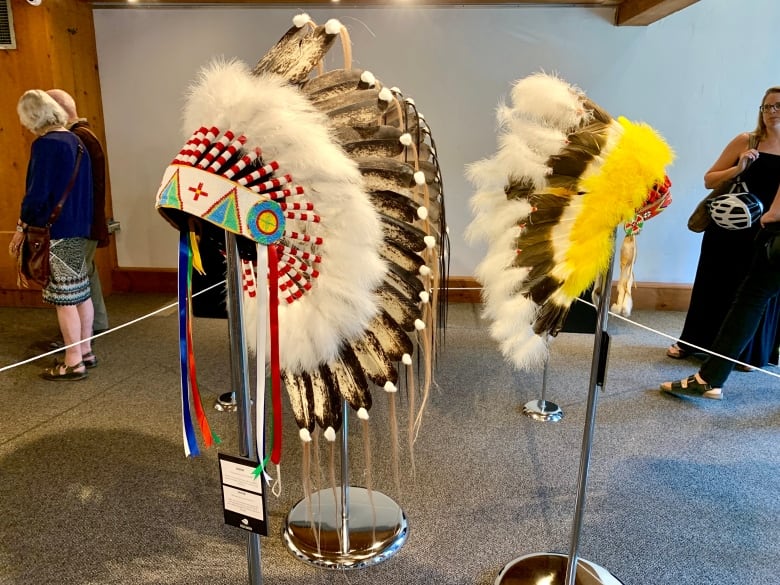Exhibition of First Nations headdresses explores issues of diversity and cultural appropriation
Essence and Regalia art exhibition part of Montreal First Peoples Festival

Tahatie Montour has been making traditional Haudenosaunee headdresses for over a decade and says his skills could transfer to another profession.
"A lot of the ways I look at it, I could be a florist," said Montour, who is Mohawk from Kahnawake, Que.
"The way the feathers stand up, it's always a challenge to make a kastowa unique."
Kastowas arefitted hats adorned with eagle, hawk, turkey or pheasant feathers and worn by men. The position of the feathers identifies which nation within the HaudenosauneeConfederacy to which the man belongs. Mohawk katsowas, for example, have three feathers standing straight up on top.

His wife Angel Horn beaded the band and Marvel-themed medallion. Last year, they made a Captain America-themed kastowa for their son. The new work keeps the superhero theme going but Montour said it's also a nod to his community's long tradition of ironworkers building city skylines across North America.
New exhibition
Montour said the kastowa is not usually what might come to mind when one thinks of a First Nations headdress, and it's why his latest work is a part of a new exhibition called Essence and Regalia at Ashukan Cultural Space in Montreal aspart of the programming for the annual Montreal First Peoples Festival.
Nadine St-Louis, executive director of Sacred Fire Productions, said it's the fifth time they've partnered with the festival to host an exhibition at Ashukan.

"This year's exhibition is super important to bring education to the general population on the headdresses, and diversity of Indigenous Peoples," said St-Louis.
Curated by Sylvain Rivard, works presented include historical items like a Tuscarora bonnet dating back to the 1860s, traditional Cree and Sioux-style headdresses made by William Burnstick for leadersandcontemporary works by Indigenous artists likeCatherine Boivin.
Creating dialogue about regalia
Rivard, an Abenaki and French Canadian artist, said the exhibition is meant to foster dialogue about regalia,issues of representation, diversity of First Nations andcultural appropriation, as well as how contemporary Indigenous artists are pushing boundaries when it comes to regalia.

He has placed what he calls a fake headdress made of goose feathers next to Burnstick's work. It was the pan-Indian style often worn by First Nations leaders across Canada between the 1920s and 1980s regardless of whetherthe style was traditional to their nation.
"Everybody was wearing that type of headdress just because it looked Indian," said Rivard.
"They wanted to feel Indian but when you see the fake one with the nice two real ones, you can see the difference."

Burnstick'sheaddresses took months to make, each using 33 eagle feathers and custom made with the leader it was meant for in mind.
"My favourite part about doing the work is the few minutes I get to pull it out and show the leader," said Burnstick.
"You get the recognition of the work you put in it, and you see it in the eyes of the people receiving it. It's so meaningful."
The exhibition runs until September.












_(720p).jpg)


 OFFICIAL HD MUSIC VIDEO.jpg)
.jpg)



























































































